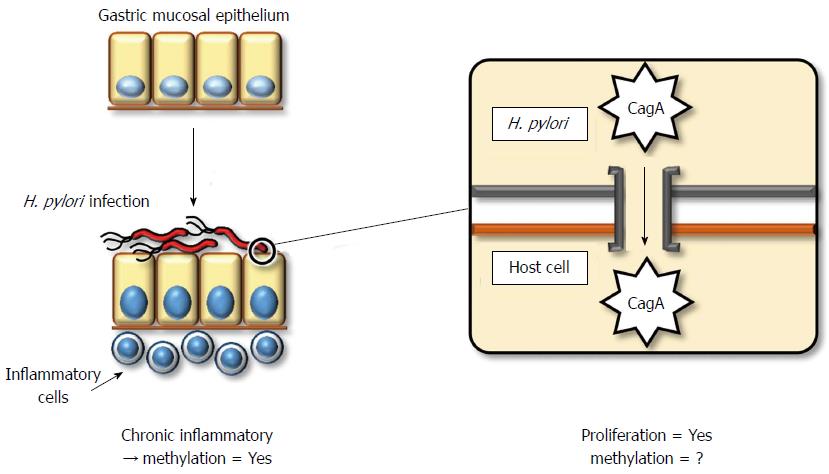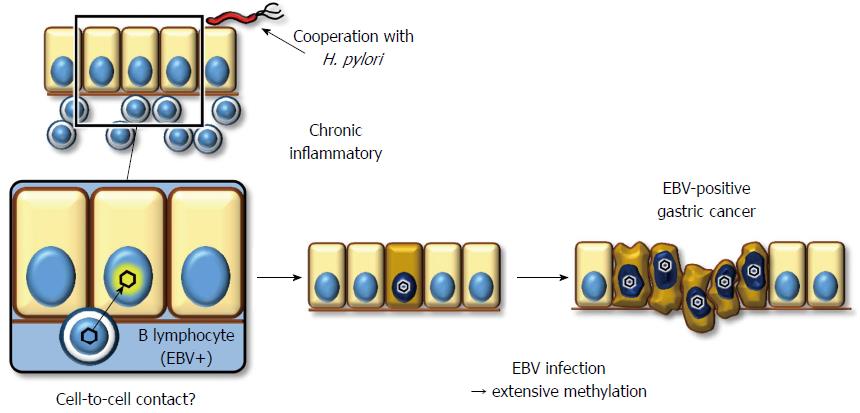Copyright
©2014 Baishideng Publishing Group Co.
World J Gastroenterol. Apr 14, 2014; 20(14): 3916-3926
Published online Apr 14, 2014. doi: 10.3748/wjg.v20.i14.3916
Published online Apr 14, 2014. doi: 10.3748/wjg.v20.i14.3916
Figure 1 Schematic representation about infectious condition and pathogenicity of Helicobacter pylori.
Pathogenicity of Helicobacter pylori (H. pylori) is exerted through injection of CagA into gastric epithelial cells using type IV secretion system. Inflammatory cell infiltration due to H. pylori might be more significant factor in induction of aberrant DNA methylation (left). Injection of CagA leads to proliferation of epithelial cells, but it is still unclear whether it plays an important role in methylation induction in epithelial cells (right).
Figure 2 Schematic representation about infectious condition and pathogenicity of Epstein-Barr virus.
Direct cell-to-cell contact between B lymphocyte and gastric epithelial cell may perhaps be the most likely model to infect with Epstein-Barr virus (EBV) into epithelial cells in vivo (left). EBV infection induces extensive promoter methylation, which should contribute to tumorigenesis. H. pylori: Helicobacter pylori.
-
Citation: Matsusaka K, Funata S, Fukayama M, Kaneda A. DNA methylation in gastric cancer, related to
Helicobacter pylori and Epstein-Barr virus. World J Gastroenterol 2014; 20(14): 3916-3926 - URL: https://www.wjgnet.com/1007-9327/full/v20/i14/3916.htm
- DOI: https://dx.doi.org/10.3748/wjg.v20.i14.3916














